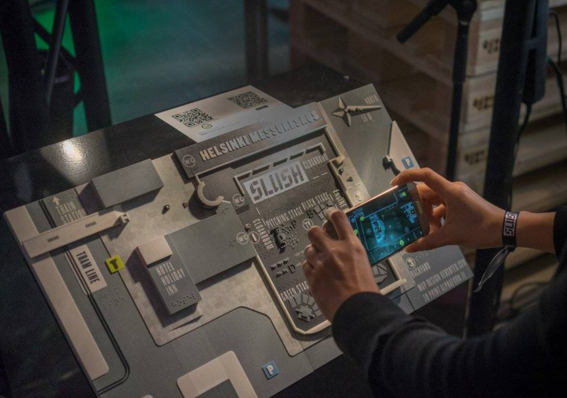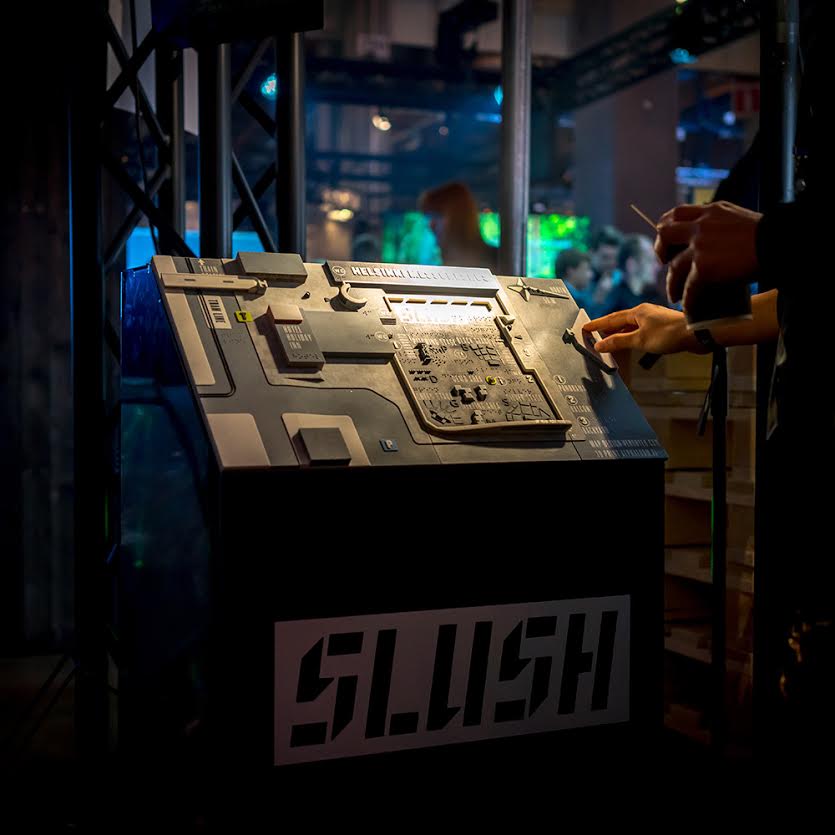 Last we checked in with Finland’s Versoteq, they were completing an innovative mapping project–and one of the first of its kind. In the business of making tactile maps, the Espoo-based startup was installing them for the visually impaired (but truly to be enjoyed by all) in both a railway station and the Sello mall in the Leppävaara region. With that project being a first, and 3D printed tactile maps still in the infantile stages, the team was curious to see how that project would turn out before they moved on to any further innovative projects in a similar vein.
Last we checked in with Finland’s Versoteq, they were completing an innovative mapping project–and one of the first of its kind. In the business of making tactile maps, the Espoo-based startup was installing them for the visually impaired (but truly to be enjoyed by all) in both a railway station and the Sello mall in the Leppävaara region. With that project being a first, and 3D printed tactile maps still in the infantile stages, the team was curious to see how that project would turn out before they moved on to any further innovative projects in a similar vein.
That test of technology and innovation in urban Finland went pretty well, judging by their new aspirations. Now, they are spreading the use of both 3D printing technology and maps further in a new project after receiving funding from European acceleration initiative, CreatiFI, which has funded their new automated map system, as well as sending them on their way to work with SLUSH organizers in Helsinki, as they worked to put on this year’s non-profit event that serves to bring together the next generation of great, ‘world-conquering companies.’
SLUSH organizers were interested in finding a way to help event goers get around the venue more easily. The Versoteq team made a digital 3D mobile map with augmented reality that visitors could use on their phones, as well as producing 3D printed tactile maps of surrounding and indoor areas. Designed for those with normal sight, the maps were reported to have helped users perceive the area better due to the 3D design and full color.
“Our Slush map design process started with combining the blueprint of the buildings with the data from outside the buildings,” Tram Nguyen of Versoteq told 3DPrint.com. “We placed 3D models of the stages to the indoor map and added information with elevated letters as well as with Braille. We also made special symbols, like north arrow and the stand marker, to help the orientation.”
The 3D printed maps are 52 cm x 30 cm wide and the height of the buildings is up to 25 cm. The team used full color sandstone, but they emphasize that single color materials or other full color materials could be used as well. For the City of Espoo maps, they used full color plastic for greater durability outdoors.
“This experiment has strengthened the ‘design-for-all’ approach in our maps–the maps should be functional to everyone and should look appealing when placed in public,” Nguyen told us. “It was a great project altogether and we learned a lot more from our first time making indoor maps.”
A great portion of the investment dollars from CreatiFI, however, went into developing their new TactMap service, still in the ‘alpha’ phase of testing, with beta gearing up at the beginning of 2016. The mission with TactMap is to make tactile maps more accessible.
“We learnt from the Finnish Federation of the Visually Impaired that one of the major reasons why tactile maps have not been widely used is that tactile maps can be difficult to obtain,” he told 3DPrint.com. “This difficulty is due to many reasons, such as production costs and production difficulty. These factors also influence on the support for the use of tactile maps, in such a way that people do not get adequate training. With TactMap, we want to change this.”
This service will allow anyone to 3D print a map from TactMap, or to order one through a hub or bureau. They point out that it is very user-friendly, and no CAD skills are required. Through using OpenStreetMap, the user just selects and area and then the 3D map is generated.
The goal, and especially with their new TactMap platform in development and testing, is to see the maps become more much accessible and affordable for all. Currently tactile maps are thousands of euros each–and they hope to cut that to hundreds instead, soon. Discuss this story in the 3D Printed Map forum thread on 3DPB.com.
Subscribe to Our Email Newsletter
Stay up-to-date on all the latest news from the 3D printing industry and receive information and offers from third party vendors.
You May Also Like
Profiling a Construction 3D Printing Pioneer: US Army Corps of Engineers’ Megan Kreiger
The world of construction 3D printing is still so new that the true experts can probably be counted on two hands. Among them is Megan Kreiger, Portfolio Manager of Additive...
US Army Corps of Engineers Taps Lincoln Electric & Eaton for Largest 3D Printed US Civil Works Part
The Soo Locks sit on the US-Canadian border, enabling maritime travel between Lake Superior and Lake Huron, from which ships can reach the rest of the Great Lakes. Crafts carrying...
Construction 3D Printing CEO Reflects on Being Female in Construction
Natalie Wadley, CEO of ChangeMaker3D, could hear the words of her daughter sitting next to her resounding in her head. “Mum, MUM, you’ve won!” Wadley had just won the prestigious...
1Print to Commercialize 3D Printed Coastal Resilience Solutions
1Print, a company that specializes in deploying additive construction (AC) for infrastructure projects, has entered an agreement with the University of Miami (UM) to accelerate commercialization of the SEAHIVE shoreline...





























